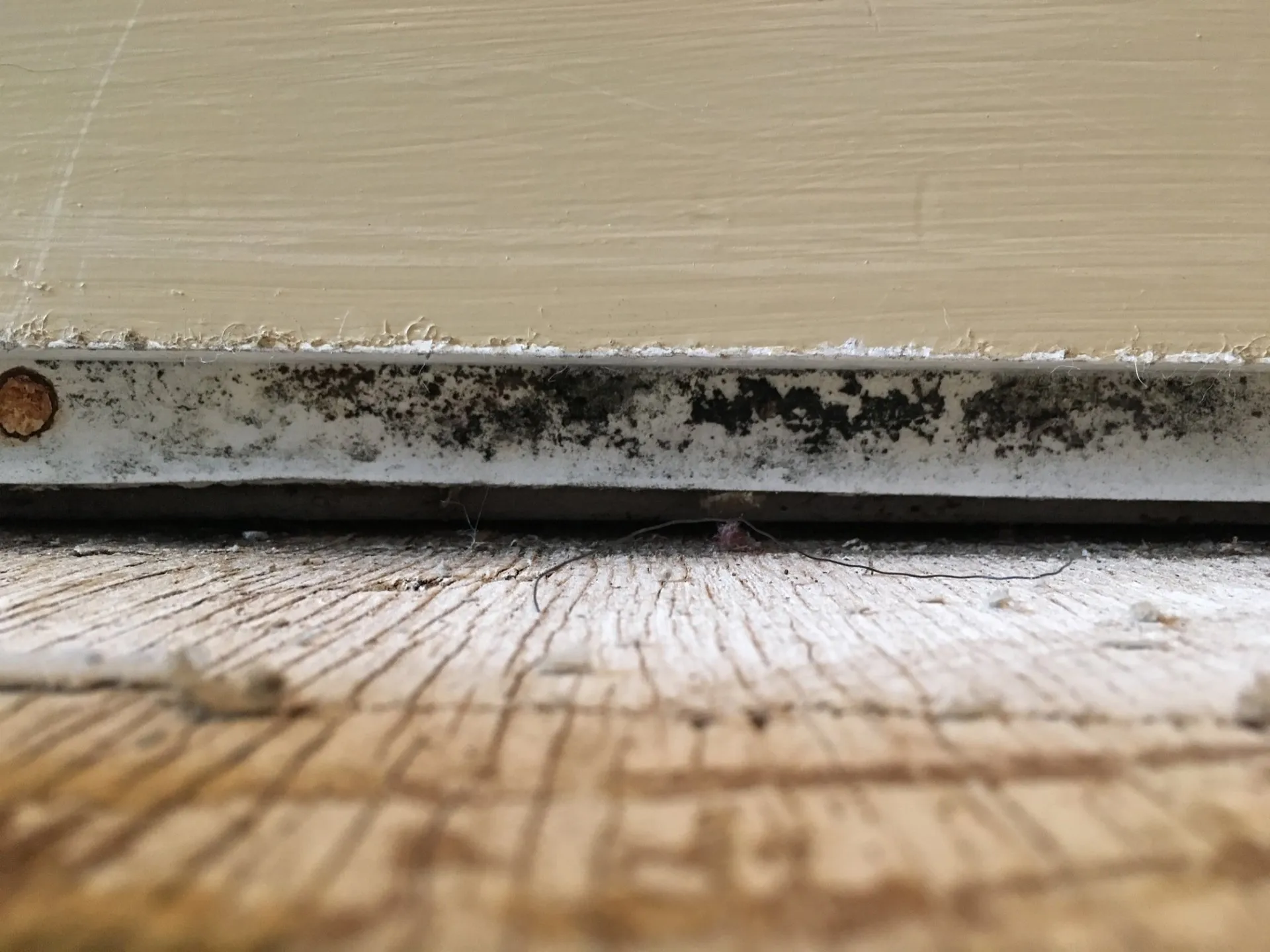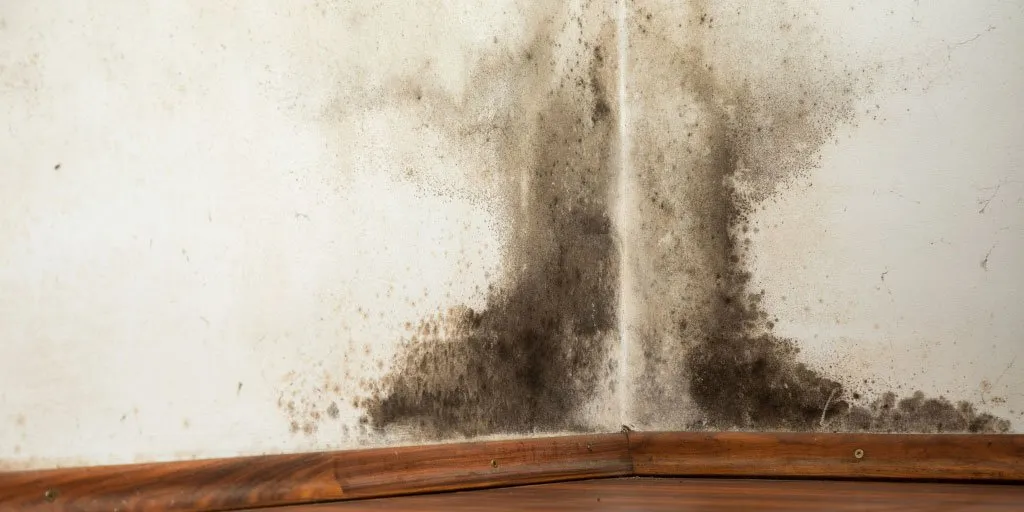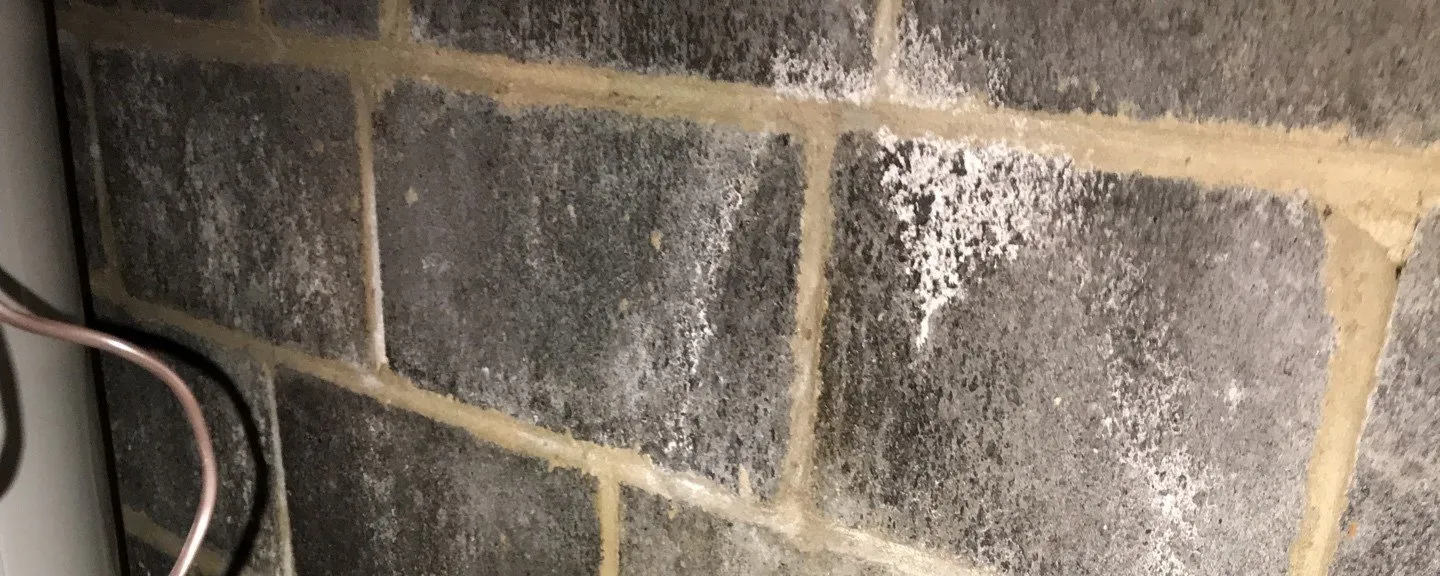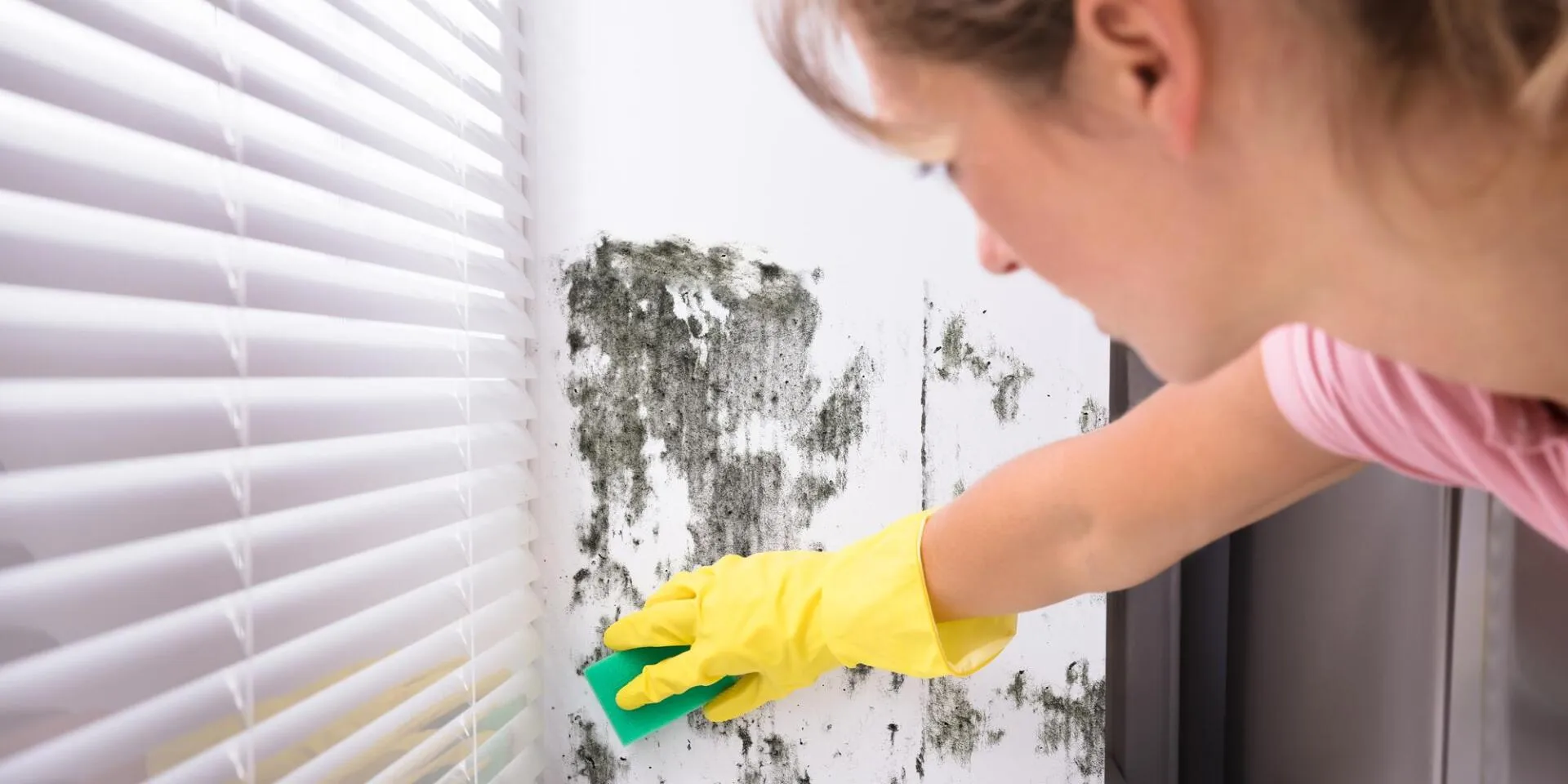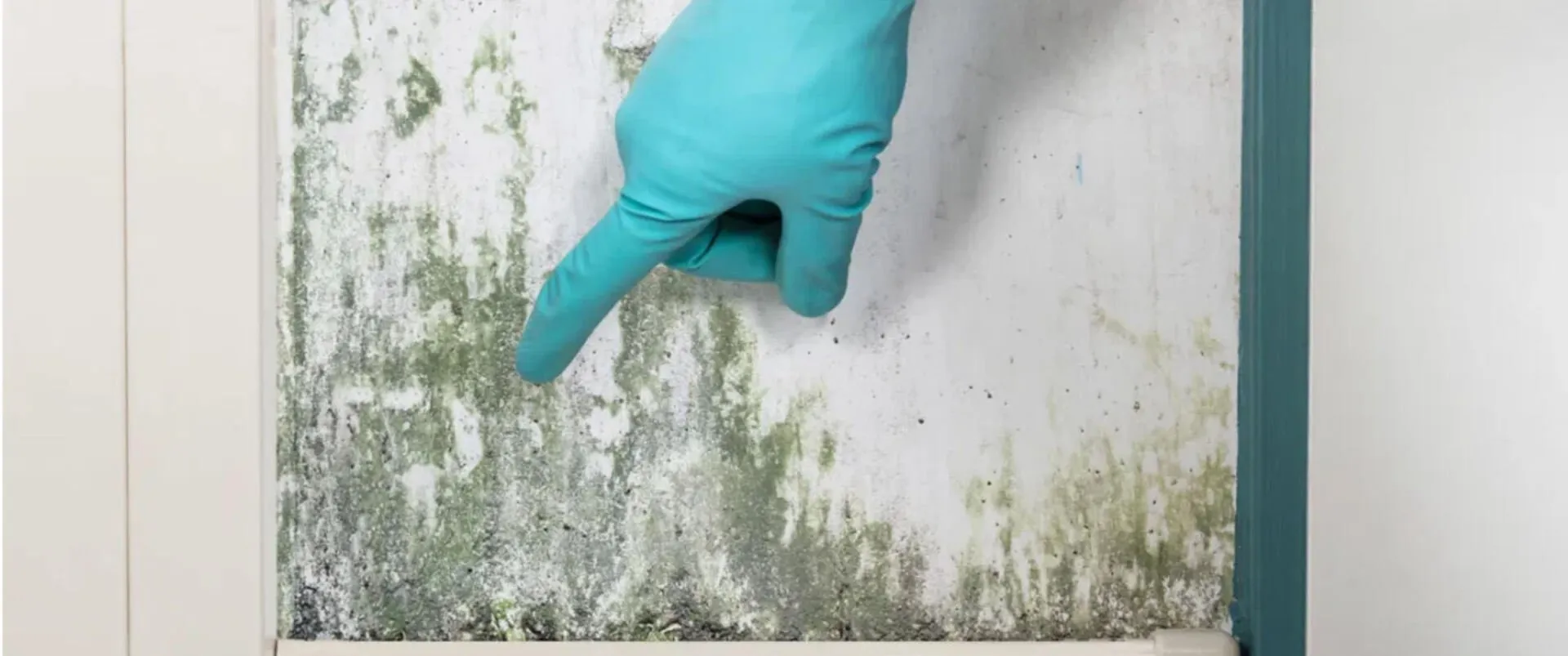
When mold invades your home, it can spread on the walls, cause wood to rot, and create serious health risks within days. These tiny spores move silently through indoor spaces, settling in damp corners and porous materials where they rapidly multiply. As indoor moisture levels rise, stopping mold from spreading becomes a critical concern for every property owner since mold can destroy drywall, weaken support structures, and trigger respiratory problems. While mold naturally exists outdoors, indoor growth poses significant risks to property integrity and indoor air quality. It’s important to understand how fast mold spreads and the conditions that fuel its growth to prevent its invasion.
Factors That Help Mold to Grow and Spread
Mold thrives when specific environmental conditions align in indoor environments. These conditions work together to create the perfect setting for mold growth in homes and buildings. Here are the five main factors that contribute to mold growth:
1. Moisture
Moisture is the key trigger for mold to start growing in buildings. When water enters through leaks or flooding, it creates the starting point for mold formation. The presence of water allows mold to spread on materials like wood, drywall, or carpet. Continuous exposure to moisture for at least 24 hours allows molds to establish themselves and expand rapidly across surfaces.
2. Organic Food Sources
Mold survives by consuming organic materials found in homes. These materials include natural fibers, wood products, paper, cardboard, and even the thin layer of organic matter in household dust. The combination of these food sources with moisture creates an ideal environment where mold can extract nutrients and energy. As mold digests these materials, it weakens the structure while continuing to grow and reproduce.
3. Time
Mold begins its life cycle immediately when conditions become favorable, with initial growth starting within the first day of moisture exposure. The colonization process accelerates rapidly, with visible patches appearing within three days of the initial spore activation. The longer favorable conditions persist, the more extensive and established the mold infestation becomes.
4. Lack of Ventilation
Poor air circulation creates environments where moisture remains trapped and humidity levels stay consistently high. Stagnant air prevents the natural drying process that would normally limit mold growth, leading to moisture accumulation in walls, corners, and enclosed spaces. Areas with restricted airflow become perfect breeding grounds for mold, as the trapped moisture combines with stable temperatures and available nutrients. The lack of air movement also allows mold spores to settle and establish new colonies more easily.
5. Temperature
Most mold species thrive in moderate temperatures that typically match our indoor living environments, particularly between 68 and 86 degrees Fahrenheit. These temperatures provide optimal conditions for mold to digest nutrients and produce new spores effectively. Temperature changes can create condensation on surfaces, providing additional moisture sources that support mold growth. The stable warmth found in most buildings, combined with other favorable conditions, allows mold to remain active and continue spreading year-round.
How Fast Does Mold Spread?
Mold development begins extremely quickly, often just 24 hours after water damage occurs. The mold establishes itself during the first 72 hours and begins multiplying rapidly. In two weeks, dark spots and patches may appear on affected areas. Mold growth throughout the house occurs as microscopic spores move through the air, creating new growth spots within 1-2 days. Each active colony grows while releasing more spores into your living space. This creates an ongoing spread cycle that can turn a small problem into a major issue in just a few weeks if you do not address it.
Tips to Prevent Mold from Spreading
Mold growth is primarily driven by access to moisture and poor ventilation in your home. Proper maintenance routines and monitoring of moisture issues can protect your home from extensive damage and improve your air quality. Here are some tips for preventing mold growth:
1. Control the Source of the Moisture
Use a moisture meter to identify problem areas in your bathrooms, kitchen, and basement. Install and maintain proper ventilation systems, including exhaust fans, to keep your indoor humidity between 30% and 50%. Check your foundation, windows, and pipes regularly for leaks or condensation build-up that could create hidden moisture issues. Make sure that you keep the gutters clear and direct water flow away from your home’s foundation to prevent water from entering the basement or crawl space.
2. Clean Any Surfaces With Mold Growth
Start by thoroughly inspecting common problem areas-bathroom grout, window frames, ceiling corners, and cabinets under the sink-where mold often begins growing. Use water and detergent to clean any visible mold. Create a cleaning schedule that targets high-risk areas weekly, ensuring complete drying after each cleaning session. However, if mold growth exceeds 10 square feet, it is best to hire professional mold experts.
3. Get Rid of Damaged Materials
Conduct monthly inspections of your home’s walls, ceilings, and floors for signs of water damage or discoloration. Remove and replace any materials showing signs of water damage within 48 hours, as mold can begin to grow in this timeframe. Consider upgrading to mold-resistant materials like specialized drywall or treated wood when replacing damaged items.
4. Improve Ventilation
Create a home ventilation schedule that includes opening windows on opposite sides of your house for 15 minutes daily when weather permits. Position furniture and storage items away from walls and corners to promote better air circulation. Install vents in key areas to maintain constant air exchange even when all the doors and windows are closed. Use ceiling fans year-round to keep air circulating, especially in rooms that tend to feel stuffy or damp.
5. Regularly Clean Carpets
Deep clean your carpets regularly, making sure that they are thoroughly dried once you’re done. Address any spills or wet spots immediately using appropriate cleaning methods and ensure the affected area is dried thoroughly within 24 hours. Schedule professional deep cleaning services twice a year to remove deep-seated moisture and potential mold spores from carpet fibers. Consider installing humidity sensors near carpeted areas to monitor moisture levels and prevent conditions favorable for mold growth.
6. Use a Dehumidifier
Place dehumidifiers in strategic locations where moisture naturally accumulates, like basements, laundry rooms, and poorly ventilated areas. Maintain your units by emptying water collection tanks regularly and cleaning filters weekly to ensure consistent performance. Monitor humidity levels and adjust settings to maintain optimal conditions, moving units as needed based on seasonal changes or problem areas. Test different locations to find the most effective placement for maximum moisture reduction in your space.
Let the Professionals Remove Mold
A well-maintained home can still face mold problems when moisture finds its way in through leaks, poor ventilation, or high humidity. If you want to stop mold from spreading in your home, timing, professional removal, and expertise matter most.
At Lamunyon Mold, we identify the true extent of your mold situation through careful property inspection and advanced testing methods. Our skilled technicians understand how to clean mold without spreading spores, using precise containment strategies and industry-leading removal techniques. We don’t just treat visible mold; our team tracks down hidden growth in walls, crawl spaces, and other moisture-prone areas to ensure complete remediation. By also addressing the root cause of moisture problems, we help protect your Manhattan home from future mold issues. When you spot signs of mold or notice musty odors, let Lamunyon Mold provide you with a lasting solution.
Frequently Asked Questions (FAQs)
The wettest places in your home become perfect spots for mold, especially bathrooms, where steam builds up daily, and basements, which are often damp due to moisture issues and poor airflow. Mold also shows up around windows, kitchen sinks, air ducts, and attics, where poor ventilation and leaks create moisture.
No, using just a dehumidifier won’t stop mold from spreading in your home. While it helps by pulling moisture from the air, existing mold will continue to grow and spread if not properly cleaned. You need to fix moisture issues and clean existing mold to actually solve the problem.
Scrubbing away visible mold will not solve the problem of water seeping into the same spots. Mold growth often occurs because of a hidden leak, poor drainage, or trapped moisture that has not been addressed. Finding and fixing these water sources is crucial for stopping mold from returning.
Insurance typically covers mold damage only when sudden accidents like burst pipes or AC leaks cause it and only if the source of damage is not discovered before mold begins to grow. Otherwise, the lack of action to make the repairs, properly dry out the affected materials, and remediate mold may be considered neglect and not covered. Everyday mold problems from ongoing dampness or poor home maintenance usually aren’t covered. Always check your specific policy and talk to your insurance agent or carrier, as coverage details vary widely between insurance companies. Mold coverage and waivers are available.

